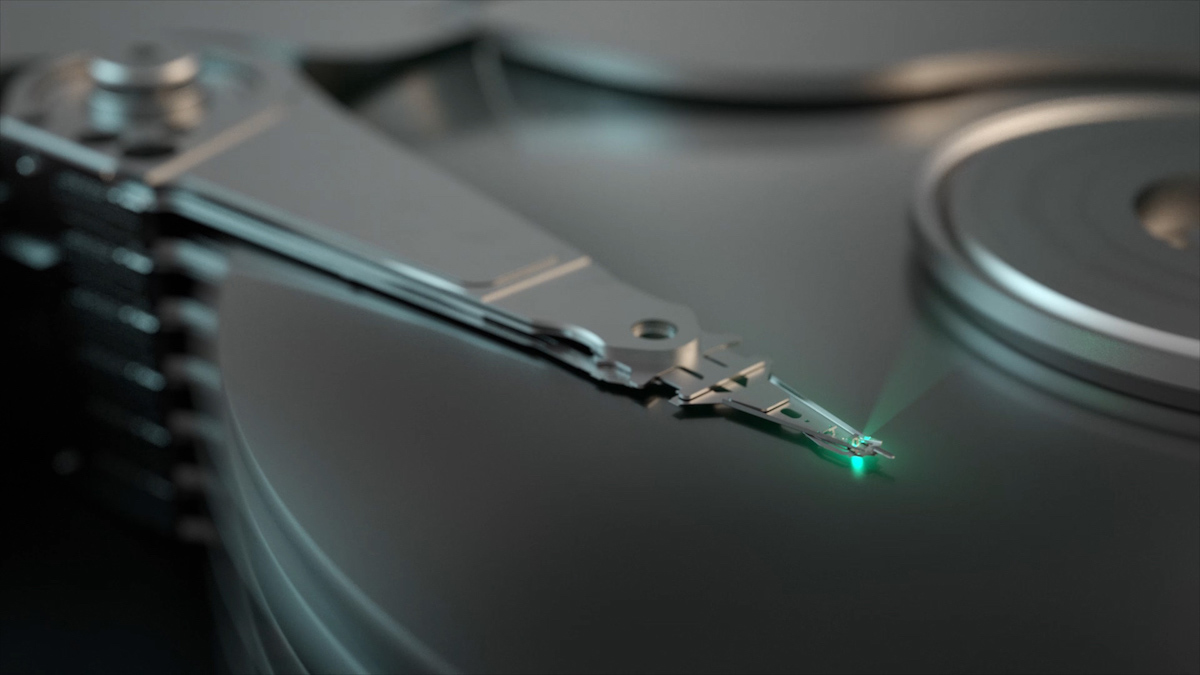Chinese researchers reveal self-encrypting molecular HDD technology supporting 100TB+ capacities

Chinese researchers have developed a high-density molecular storage system that uses organic molecules to store and encrypt data, reports Blocks & Files. Information is recorded and retrieved using a specialized atomic force microscope, which manipulates molecular states to store data, according to the description at Nature. While the technology can potentially enable ultra-high-density storage devices that reduce storage space requirements and power consumption (e.g., HDDs with capacities of 100TB and higher), short lifespan of atomic microscope tips remains a major obstacle.
Traditional HDDs store data on magnetic materials that change their properties using magnetic write heads. The molecular HDD technology works by storing and processing data using tiny molecules that change their electrical properties when exposed to voltage. The researchers used 200 self-assembled Ru LPH molecules arranged in a thin monolayer (SAM), where ruthenium ions switch between oxidation state and ion accumulation state, altering the material's conductance using a conductive atomic force microscope (C-AFM) tip. A (C-AFM) tip with a radius of 25nm writes and reads data by applying a small voltage to control these molecular changes, allowing for 96 different conductance states per unit (6-bit storage), which somewhat resembles multi-level cell NAND.
Since this system does not need strong magnetic fields and does not need to heat the medium, it operates with extremely low power consumption (pW/bit range) for reads and writes, which is potentially very efficient for large-scale data storage, according to researchers. However, since the scientists envision usage of their innovations in HDD form-factors with spinning media based on glass substrates, power consumption of actual drives will likely be comparable to that of traditional HDDs as motors will still consume power.
The researchers estimate that the SAM layer has an estimated thickness of ~ 2.54nm. If we assume that each Ru LPH molecule has a similar width and length on the order of a few nanometers, then 200 molecules arranged in a compact monolayer would occupy an area roughly in the range of tens of square nanometers (i.e., 10-20nm in width and length). Napkin math then shows that storing 6-bits of data per 200 self-assembled Ru LPH molecules translates into around 9.6Gbit/inch^2 (keep in mind that the napkin math could be wrong though), which is in line with what HDD makers expect from traditional hard drives heat-assisted writing and bit-patterned media (BPM). Such HDDs featuring HDMR technology are projected to emerge sometimes in the 2030s and enable capacities of over 120 TB per 3.5-inch HDD.
While HDMR has its own peculiarities (e.g., fully patterned medium using a lithography technology), this technology is at least understood by HDD makers, which potentially makes the molecular HDD research obsolete as by the time it may reach maturity and be ready for commercial applications, HDMR will be in mass production. However, the molecular HDD technology seems to have an ace up its sleeve.
Molecular HDDs can implement built-in encryption using bitwise XOR operations. This means the system can securely encode data at the molecular level, preventing unauthorized access. This was demonstrated by encrypting Mogao Grottoes mural images, where each pixel's information was transformed using XOR logic and later decrypted. Additionally, the molecular HDD can perform logical operations like AND, OR, and XOR directly within the storage unit, reducing the need for extra computing power.
Despite its potential, the system has a critical flaw, though - the short operational lifespan of the C-AFM tip. These tips last between 50 and 200 hours when used intermittently and just 5 to 50 hours in continuous mode, according to Blocks & Files. Such a limitation makes long-term, large-scale storage applications impractical unless more durable tips can be developed. If this issue is resolved, molecular storage could match or even surpass the density of next-generation HDDs and archival tape storage. However, for now, significant engineering challenges remain obstacles for it to become a viable alternative to existing storage methods.
Get Tom's Hardware's best news and in-depth reviews, straight to your inbox.

Anton Shilov is a contributing writer at Tom’s Hardware. Over the past couple of decades, he has covered everything from CPUs and GPUs to supercomputers and from modern process technologies and latest fab tools to high-tech industry trends.